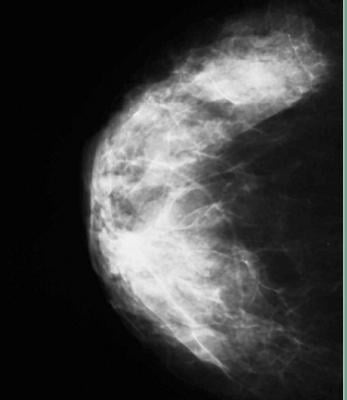
The accurate measurement of mammographic density offers the potential to improve breast cancer risk prediction and to tailor screening protocols according to risk, according to a study published in Breast Cancer Research (16:439 doi:10.1186/s13058-014-0439-1). The article, “Digital mammographic density and breast cancer risk: a case-control study of six alternative density assessment methods,” demonstrates a strong connection between breast density and breast cancer risk.
The study details the results of a comprehensive comparison of available mammographic density measurement tools and their ability to predict breast cancer risk. The performance of three area-based approaches (BI-RADS, the semi-automated Cumulus, and the fully-automated ImageJ-based approach) and three fully-automated volumetric methods (VolparaDensity from Volpara Solutions, Quantra from Hologic, and single X-ray absorptiometry (SXA)) were assessed in 3,168 digital mammography images. This included cancer cases diagnosed at Royal Marsden Hospital in London and normal mammograms from the England and Wales national mammographic screening program.
“Mammographic density is one of the strongest risk factors for breast cancer and is increasingly being used to tailor preventive and screening strategies to a woman’s risk. It is also a major determinant of the sensitivity of mammographic screening and, by extension, the detection of interval cancers. Consequently, in many US states, it is now mandatory to inform screening-attendees of their density,” said Isabel dos-Santos-Silva, M.D., professor of epidemiology at the London School of Hygiene and Tropical Medicine, UK. “The results show that the mammographic density measurements yielded by automated volumetric measurements are as good predictors of breast cancer risk as those generated by well-established, but more labour-intensive methods such as Cumulus.”
All six density assessment methods showed that percent density was inversely associated with age and body mass index (BMI), and certain reproductive factors. While all of the methods produced positive associations of density with risk, the association was highest for Volpara and Cumulus. Volpara and Cumulus were also the only tools that produced breast density measures for all images in the study, with other methods failing to produce readings for up to 11% of the participants. Women with the highest density had 8.26 times the risk of those with the lowest breast density as measured by Volpara on this dataset (the 95% confidence range was 4.28-15.96). The results also suggest that Volpara is better at identifying women at low risk than the other methods.
“Building on other recently published results looking at the link between breast density and risk, this study led by dos-Santos-Silva continues to reinforce the ability of mammographic density to improve the prediction of breast cancer risk and to help physicians implement tailored screening according to that risk,” said Ralph Highnam, Ph.D., Volpara Solutions CEO and Chief Scientist. “A great deal of research has demonstrated the value of volumetric density, and this study further validates that Volpara’s fully-automated breast density assessment is a valuable tool and has the solid potential for use in helping to predict risk.”
Additional studies are underway to investigate the utility of volumetric methods in screening settings including their contribution to the development of screening approaches tailored to a woman’s risk.
Cleared by the FDA, HealthCanada, the TGA and CE-marked, VolparaDensity is used by radiologists to objectively assess density from both digital mammography and tomosynthesis images to help doctors evaluate who might benefit from additional screening. Highly correlated to breast MR assessments, VolparaDensity is a reliable tool that automatically generates an objective measurement of volumetric breast density correlated to the ACR (American College of Radiology) breast density categories. To date, more than 3-million women have had their breast density analyzed, using VolparaDensity. VolparaDensity is part of a suite of quantitative breast imaging tools built on the Volpara Solutions algorithm that allows for personalized measurements of density, patient dose, breast compression and other factors designed to help maintain accuracy and consistent quality in breast screening.
For more information: www.volparasolutions.com


 December 08, 2025
December 08, 2025 









